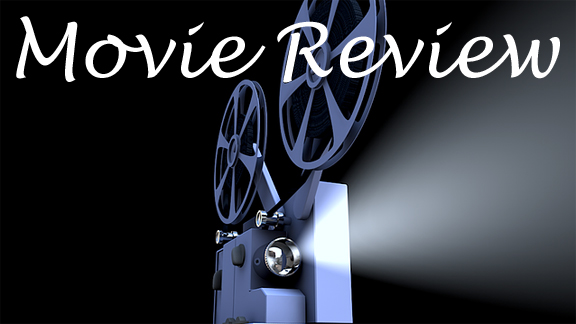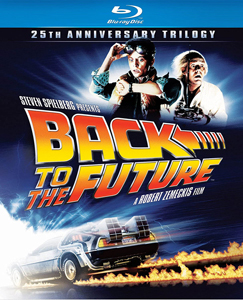“Back to the Future” (1985) is one of the all-time great films, utterly fun and free-wheeling, yet it rewards film nerds’ deeper explorations with its flawless storytelling structure and genre balance. It’s adorable despite being about a teenage girl crushing on her future son, it’s smart despite being about something that’s impossible, and it accurately captures two out of three eras.
Its 1955 and 1985 are pitch-perfect; the flying-cars version of 2015 not so much. But it does promise more time-hopping fun, teasing the possibilities of further adventures with that classic ending where Marty McFly (Michael J. Fox) views his own actions from earlier in the film.
It totally holds up
Writers Bob Gale and Robert Zemeckis (who also directs) craft a movie that we all loved as kids and can still watch today … and yet it’s the most awkward movie to be watching when your parents walk into the room.

“Back to the Future” (1985)
Director: Robert Zemeckis
Writers: Bob Gale, Robert Zemeckis
Stars: Michael J. Fox, Christopher Lloyd, Lea Thompson
In one of the film’s many threads that are equal parts comedic and intense, time-traveler Marty must get his 1955-era mom Lorraine (a super-cute Lea Thompson) to fall in love with his nerdy dad, George (a wonderfully awkward Crispin Glover). But Lorraine is seriously crushing on Marty; and what’s more, the way to get her to reject him might be to get aggressively physical.
“Back to the Future” shows love for both 1955 and 1985, plus starry-eyed hope for the distant future of 2015 with that final image of the flying DeLorean rejiggered by Doc Brown (Christopher Lloyd, playing an iconic mad scientist).
We learn the basics of time travel in a setting that now plays as nostalgic: What’s more 1985 than a suburban mall parking lot and a bulky video camera? Doc’s mumbo-jumbo explaining the mechanical workings (flux capacitor, plutonium, etc.) hits that sweet spot where we buy into it without needing to understand it. A good dose of verisimilitude – see also the fact that the car is covered in ice when it returns through time — can overcome the purest BS.
The metaphysical consequences of messing with time are also made clear. A prime example is the photograph where Marty and his brother and sister fade out of existence when things are going poorly between George and Lorraine; the images fade back in when things go better.
When I write about “The Terminator” saga, I spend a lot of time theorizing about time-travel rules, but that’s not necessary with “Back to the Future” – at least this first film – because its closed-loop rules are part and parcel to the plot.
Serious stakes
Thus, we understand the life-or-death stakes of Marty getting his parents together, even though the entire thread is comedic. Fox is excellent as the lovable Everyteen, and he plays the humor beats perfectly, like when Marty desperately scrambles from the dinner table when Lorraine touches his leg. The writers also pepper in era-hopping humor like: “No one owns two TVs” and “No wonder your president has to be an actor. He’s gotta look good on television.”

As we follow Marty’s crucial mission, the threat of unintended consequences also hangs over things. Because of Marty’s sudden appearance as a better option for Lorraine (from her ignorant-of-time-travel perspective), this time around George has to be more impressive to win her over.
This means developing confidence that will carry into his adult years and even effect his children’s lives. It’s interesting to think that one action could be so pivotal. And it’s gleefully satisfying that the a**h*** Biff (Thomas F. Wilson) gets what’s coming to him.
“Back to the Future’s” winks at the audience aren’t too extreme even though it has been followed by tons of movies that get too wrapped up in their own cleverness. Marty plays “Johnny B. Goode,” which in the real world came out in 1958, and then Chuck Berry’s cousin phones Chuck to tell him about this new sound.
The teens get into it, but when Marty does 1980s style stage moves such as sliding on his knees while finding the guitar’s high note, they stare in bafflement. Later, Lorraine decides she likes the name “Marty.” None of this goes too far; it’s just right.
Special effects have aged well
It’s remarkable how well “Back to the Future’s” production has aged. The DeLorean disappearing and leaving streaks of fire when it hits 88 mph is what we all remember, but little details like the facial prosthetics are equally impressive.
Thompson and Glover play themselves as teens and as adults, with only minimal prosthetics, and it’s believable. Wilson benefits from excellent hair work, going from a crewcut to balding to show Biff through the years. The makeup team doesn’t do as much with Lloyd, but I guess Brown is one of those guys that always looks roughly the same age once he hits adulthood.
The final achievement of “Back to the Future” comes in the epilogue that finds Doc, Marty and Marty’s girlfriend Jennifer (Claudia Wells) flying into the future – and a sequel. So many sequels, especially back in those days, were dictated by box-office rather than storytelling.
But Zemeckis and Gale brazenly announce that they have more story to tell, and they are rightly confident that the audience wants to join them on the ride.

